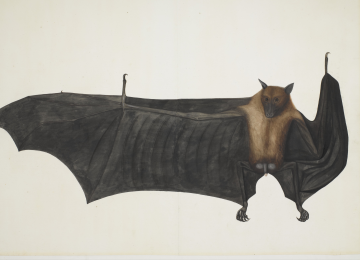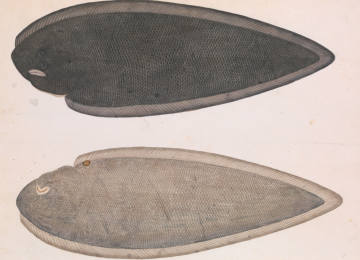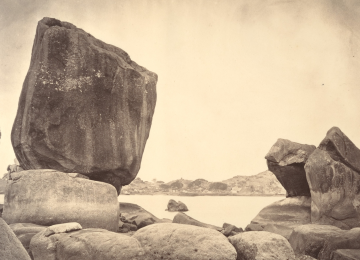Love Thy Neighbour
Ryan P. O’Donnell
My grandfather was a biologist, and my grandmother was a librarian. With this genetic combination, it is perhaps unsurprising that I wound up as a plant systematist and taxonomist. Put simply, systematics is the science which aims to discover, classify, and interpret the evolutionary history of all life on Earth. Taxonomy then, is one branch of the systematics tree which concerns itself with how we name and describe this diversity. Where taxonomy provides us with a cast of characters, systematics gives us their dramatic backstory. At the basest level, systematists are simply life’s librarians. But we are much more than this - we are also life’s biographers, genealogists, and historians. As systematists, we are life’s storytellers.
At parties, I will often just say ‘botanist’ when the inevitable question of “so, what do you do?” comes up, which will invariably be followed up with questions like “why do my succulents keep dying”, “how often should I water my orchid”, or do I prefer sativa or indica. I will then have to break the bad news that what they really need is a horticulturalist, and that as a botanist, I am in reality, a terrible gardener. As a plant systematist, I am more interested in the evolutionary relationships between plants rather than how to grow them, or how we as humans may be able to capitalise on their existence. Nevertheless, it was gardening that taught me to take notice of plant life, and to recognise the enormous role they play in our lives.
I grew carnivorous plants as a child; however, they had all but fallen off my radar until I performed in a university production of Little Shop of Horrors, which reignited my curiosity. After this, I went and bought my first carnivorous plant as an adult from a rather unassuming hobby gardener off Facebook. He showed me through to his backyard where his collection of hanging pitcher plants was growing happily in the humid summer heat. I pawed through his selection of cuttings and picked a robust specimen of what I now know to be Nepenthes maxima x ventricosa; a hybrid of two species, Nepenthes maxima from New Guinea and Indonesia, and Nepenthes ventricosa, a species endemic to the Philippine highlands. This hybrid does not occur naturally, and it is only through human interference that it exists. I feel that there is some sort of cosmic poetry in this hybrid plant of partial Philippine ancestry making its way into my hands, another hybrid of partial Philippine ancestry, to live out the remainder of our lives in a country far removed from where our stories ostensibly began.
Like Audrey II and Seymour Krelborn, this new plant had a hold on me. In my characteristic (and occasionally disabling) hyperfocus, I had to learn everything about it. It started off simple with questions of how do I care for this thing and where did it come from, but soon I needed to know more. I learned about its close relatives, its family tree, the spectacular evolutionary forces that had shaped it over millions of years, and from there I was compelled to expand my horizons to the whole plant kingdom. I learned about the ecology of plants, and their place within the vast network of life. Finally, there came the time where I would learn of the dire existential threats that all plants face, all products of our own doing: the prospect of a slow and torturous heat death as a result of an ever-warming climate, being burnt to ash as rich rainforest land is torched to make way for agriculture, or winding up on the black market, where the narcissistic need for the newest, most exotic plants drives the poor and desperate from countries ravaged by colonial forces to hunt for these natural wonders, forcibly rip them from the earth, and transport them to whiter shores where they will undoubtedly perish, perched atop a neglected bookshelf, far removed from their hothouse jungle habitat.
I felt a visceral pain when I realised what we as a species had done, and will continue to do. I grieved for the species that we have lost, and for the species that will soon share the same fate. I had grown very attached to the plants in my care, and in turn they had helped me to care deeply about the world around me. It is because of this that I chose to abandon my previous career ambitions, and instead pursue a life of science.
It is easy to look at certain plants and think, “who cares?” Why bother saving them? The same can be said of any biological group – fungi, fish, birds, frogs, mammals, the list goes on. But who made us as humans the arbiters of life or death? I am a firm believer in the equality of species, in that every species has an inherent right to exist—just because. Not simply because they can deliver to us as humans new foods, medicines, or profit.
As a small tribute to my strict Catholic-Filipino upbringing, here is a reading from the book of Matthew: “thou shalt love thy neighbour as thyself”. I am no longer religious, but as a biologist I still treat this as gospel. It seems a condition of contemporary concrete living is that we have become isolated from those around us, and it is now rare for us to know who our neighbours are. So, too, on the planetary scale, we have forgotten that we share this space with others, many of whom have been here for eons before us, and who will likely persist long after we are gone. I believe that as a systematist, it is not enough to simply name and describe the infinite variation of nature to satisfy our innate need for order. We must treat this endeavour as an act of knowing and respect. We must learn our neighbours’ names and who we share our planet with, so that we may someday hope to understand them as equals. We must listen to them and tell their stories, before they are reduced to silence.


